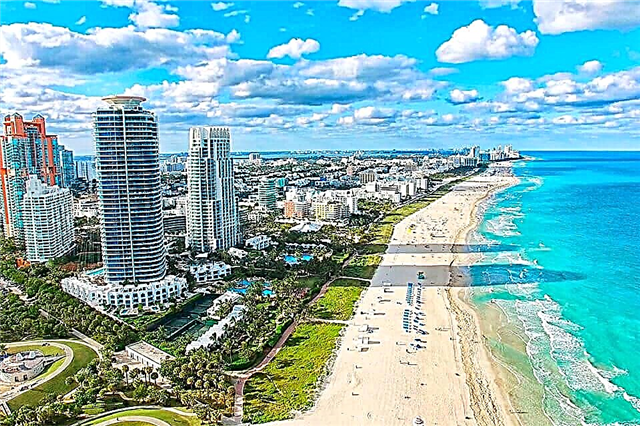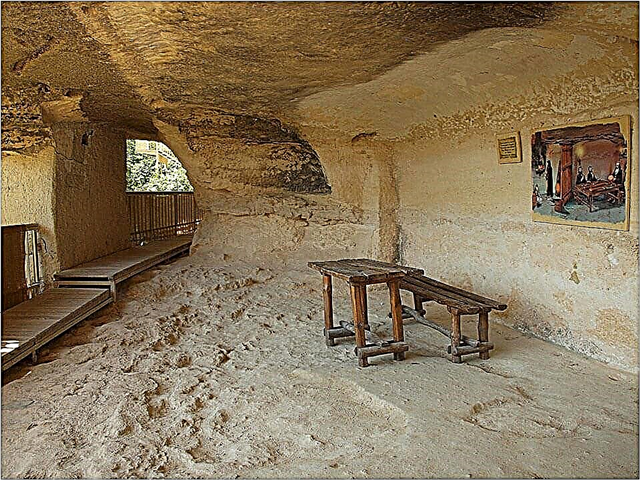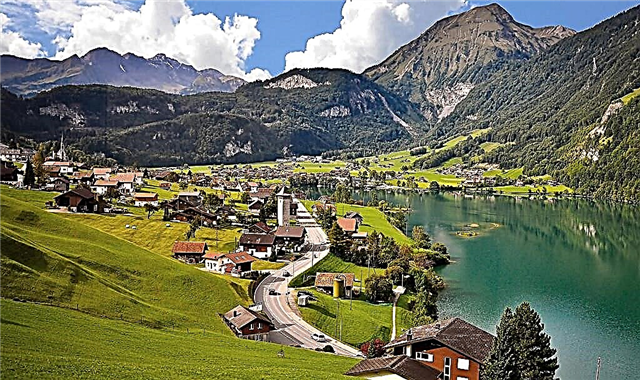Christian monasteries near the famous Pleshcheyevo Lake are considered one of the most ancient Russian monasteries. One of them appeared at the beginning of the 11th century, and the other was built on an old pagan temple. Largely thanks to the monastic communities and strong monastic walls, it was possible to repel the attack on the city by the troops of Khan Tokhtamysh and his followers, as well as to resist the Polish-Lithuanian formations during the Time of Troubles. Today in Pereslavl-Zalessky you can visit five monasteries, four of which are active.
Goritsky monastery

Cathedral of the Assumption of the Blessed Virgin Mary and the Church of All Saints of the Goritsky Monastery
The squat defensive walls and towers make this monastery look like a massive fortress. In addition, there is an ancient monastery on a hill and is visible from everywhere. It is because of this that the Goritsky Monastery is often called the Kremlin.
The exact date of the foundation of the monastery remains unknown. This happened because most of the documents were burned during a fire several centuries ago. However, written evidence has been preserved that the Christian monastery was erected on the site of a pagan sanctuary, and this happened no later than the XIV century.
The powerful monastery fortifications were not built for beauty. The Pereslavl monastery more than once became a participant in bloody military operations. It was here that Dmitry Donskoy's wife, Princess Evdokia, hid when the ruthless hordes of Khan Tokhtamysh made a devastating raid on the Russian lands.
Buildings built in the 16th-17th centuries have survived in the monastery complex to this day. These are the Holy Gates with the Church of St. Nicholas towering over them, the elegant Passage Gate in the eastern part of the wall, and, of course, the majestic Assumption Cathedral, which rushed with its five domes straight to the sky.
Nowadays, the monastery is not active, and its premises are used for a variety of museum collections. The museum-reserve belonging to the city can rightfully be considered one of the largest and richest museum collections in the country. Its collections include over 80 thousand unique exhibits. Icons, old wood sculptures, picturesque canvases, skillful gold embroidery, exquisite forged products and rare photographs - all of which are not found in museum halls.
The museum has existed in the monastery for many decades. However, a decision was made to restore an existing Orthodox monastery on the territory of the monastery. Therefore, today, work is being carried out here on the gradual transfer of museum collections and the liberation of ancient temples and buildings for the monastic community.
The monastery is located to the left of the highway at the entrance to the city from the capital, in Museum lane, 4.
Fedorovsky monastery

Cathedral of Theodore Stratilates of the Holy Trinity Danilov Monastery
The history of the monastery, dedicated to Fyodor Stratilat, has more than seven centuries. It was founded at the beginning of the XIV century as a monastery. And since the 17th century it has been a functioning nunnery, where today 20 nuns live.
The Fedorov monastery had a special destiny. She was always patronized by the Russian sovereigns: first the Rurikovichs, and then the Romanovs. Tsar Peter I brought here European looms, and the nuns became famous as skilled craftswomen in the manufacture of church vestments. The best gold embroiderers in the city also worked in this monastery.
Today, the central place in the monastery complex is occupied by the majestic Fedorovsky Cathedral, built in the middle of the 16th century. Next to it is the Church of the Entry of the Virgin into the Temple (early 18th century). And in the south of the monastery territory there is a temple of the Kazan Icon of the Mother of God (XVIII century).
The monastery stands at 85 Moskovskaya Street and is visible to the right of the highway, at the entrance to the city from the Moscow side.
Holy Trinity Danilov Monastery

Holy Trinity Danilov Monastery from a bird's eye view
More than 500 years ago, a wandering monk Daniel appeared in the ancient Russian city. He lived in Nikitsky and Goritsky monasteries, and gradually went from a simple monk to an archimandrite. Daniel's special concern was to bury the dead pilgrims, homeless and beggars, according to Christian customs. Thanks to his efforts, at the very beginning of the 16th century a new monastery appeared in Pereslavl.
A hundred years later, when Russia was going through the ruinous Time of Troubles, the monastery suffered greatly. The Polish-Lithuanian troops attacking the city burned down most of the monastery buildings, and killed the peasants who worked for this monastery. However, until the end of the 17th century, the monastery was not only restored, but also rebuilt in stone.
Some of those early stone buildings have survived to this day. This is the majestic Trinity Cathedral erected by Rostov craftsmen. Inside you can see wall paintings made by Kostroma and Yaroslavl isographers in the 1660s. On the east side of the cathedral is the All Saints Church, which appeared in the monastery in the 1680s. And in the southeast of the monastery rises the amazingly beautiful temple of the Praise of the Mother of God, erected at the very end of the 17th century.
Today, 20 inhabitants live in the monastery. The monastery is located in the center of the city, in the former Lugovaya Sloboda, at 17 Lugovaya Street.
Nikitsky monastery

General view of the Nikitsky monastery
The most ancient monastery near the legendary Pleshcheyevo Lake was founded at the very beginning of the 11th century. This monastery was among the very first Christian buildings, erected by order of Prince Boris of Rostov. In those days, the purpose of the monastery was one - to convert the pagans who lived on the shore of the lake to the Christian faith.
The monastery was consecrated in honor of one of the saints most revered by believers - the great martyr Nikita. Often times in history, some events overlap with others. It is curious that in the 12th century an unusual healer and holy fool - Nikita Stylpnik lived at the monastery.
Ancient chronicles have brought the heroic pages of the monastery's history to our time. At the beginning of the 17th century, for more than two weeks, the monks, together with the abbot, repulsed the siege of the Polish-Lithuanian troops of Jan Sapieha. However, experienced soldiers still managed to defeat the monks. The monastery was taken by storm, and its defenders were executed.
Today in the ancient monastery you can see the beautiful, monumental Nikita Cathedral, built during the time of Tsar Ivan IV the Terrible. A slender hipped-roof bell tower rises over the entire territory. The monastery also has a preserved church, where the young Tsar Peter I stayed during his first visits to Lake Pleshcheyevo. This is the Church of the Annunciation.
The entire complex of monastic buildings is surrounded by white stone walls. It is enough to look at their towers and loopholes to understand how powerful the fortification built around the monastery was. Tsar John IV the Terrible took part in the construction of these walls. By his order, the stones were fastened with a special solution, and the base of the walls was laid out with massive boulders.
Today, 15 inhabitants live inside the monastery. Many pilgrims come to the famous healing spring of St. Nikita, which is located about 1 km from the monastery walls.
The monastery stands in the northern part of the city, in the former Nikitskaya Sloboda.
Nikolsky monastery

View of the Church of the Beheading of John the Baptist in the belfry, the Cathedral of Nicholas the Wonderworker and the Church of Peter and Paul along the eastern wall of the monastery
Saint Nicholas is one of the most revered Orthodox saints. Therefore, it is not surprising that at the beginning of the XIV century, a monastery dedicated to him was built in the city. The founder of the monastery is Dmitry Prilutsky.
In the first centuries of its existence, great trials awaited the new monastery. Not once was it completely plundered and burned by the khan's raids and military detachments of False Dmitry.And in the 60s of the 17th century, the monastery territory was completely empty after the plague epidemic, from which 9/10 of all residents of the city died.
At the end of the 19th century, the monastery was transformed into a women's monastery by the decision of the church authorities. The nuns quickly got down to business, managed to renovate old buildings and erect several new buildings. However, the monastery suffered greatly during the active struggle of the Soviet regime with religion. First, the monastery was closed. Then the main temple and the bell tower were blown up, and the territory was used as a livestock base.
Nowadays, the ancient monastery is actively reviving and is open to both pilgrims and tourists. The monastery is located in the central part of the city, not far from the mouth of the Trubezh, on 43 Gagarin Street.











